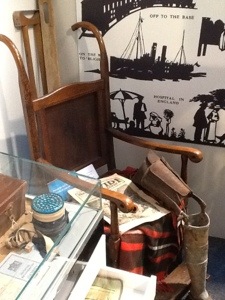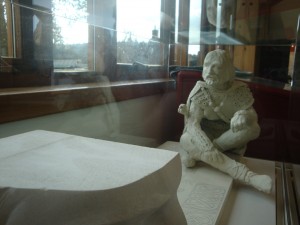I was out at the Silchester Excavation site today for one of their annual Open Days. For those of you that don’t know, the Silchester Excavation is examining one insula (or block) in the large Roman town of Calleva Atrebatum and the Iron Age settlement Calleva which lies beneath it. Since 1997 Prof Mike Fulford and Amanda Clarke have been leading a team of dedicated excavators at the site. Silchester is the University of Reading Archaeology Department’s training dig and students make up the majority of the ‘diggers’.
Students also get involved in the interpretation of the site, this year under the guidance of freelance museum educator Ross McGauran. The site welcomes school groups and has a training pit, Roman garden, tours and activities for visitors to the site. I was also really impressed by their head-sets which linked visitors not to a pre-recorded tour but to a microphone. This meant that site directors could jump around the trenches providing information while visitors listened from a viewing platform. On a windy day like today this was much needed.
This kind of activity also gives students an opportunity to communicate their passion for the subject with the public. In recent blog posts I seem to be repeatedly talking about how easily the popular image of apathetic students is overturned when you look at heritage volunteering. Academics and professionals can assist in this process by providing support and giving students a platform to express themselves. To link back to a previous post on this blog two of the students were Nerdfighters and the three of us chatted about how we had been inspired to use social media to communicate about arts and heritage. I am currently thinking about how I can integrate social media training into my teaching to help students in this process. The students that I met at Silchester were excellent communicators and the kids who visited were enthralled. I walked back up the path at the end of the day to find a 7 and 3 year old ‘being archaeologists’ by picking up every piece of gravel. If you want to be similarly inspired the next Open Day is on 3rd August…






















